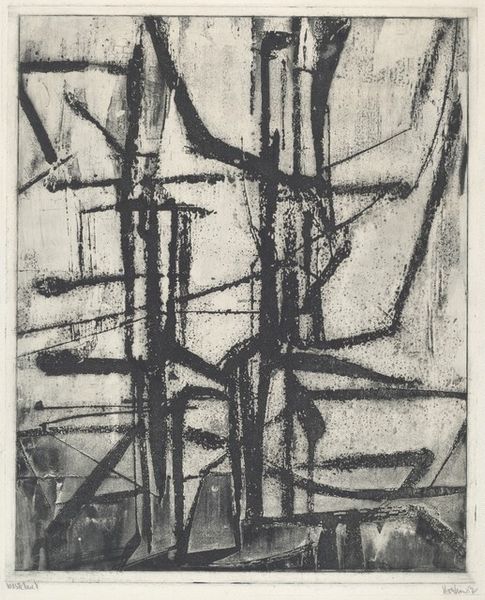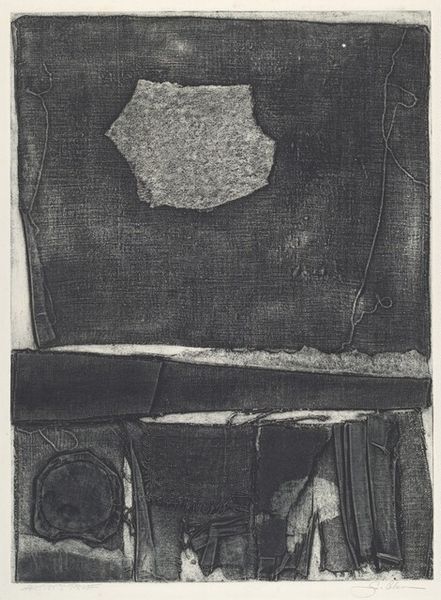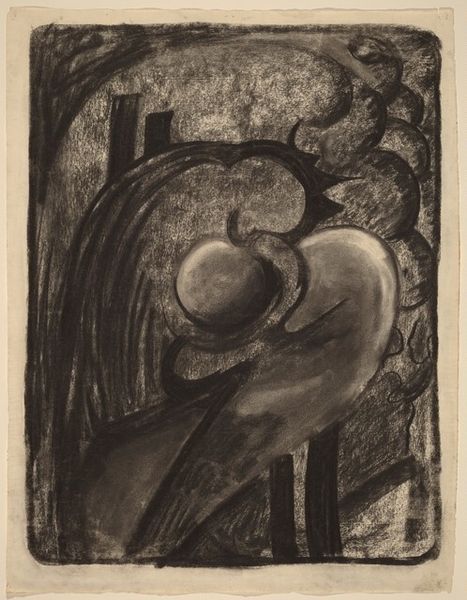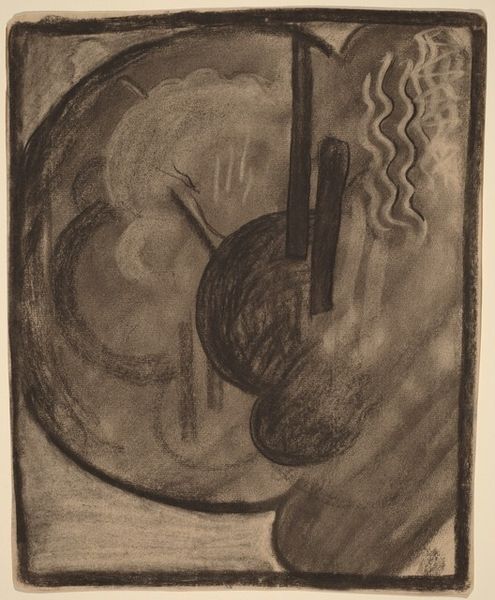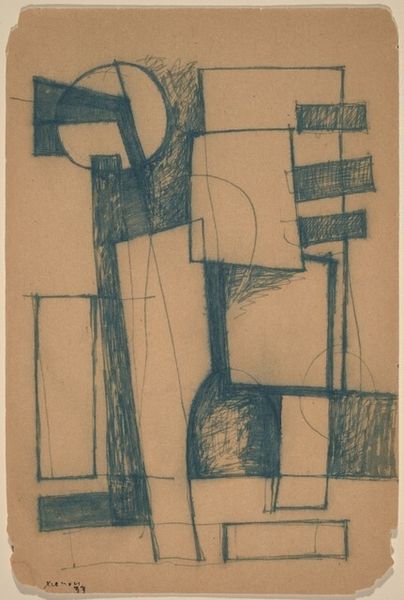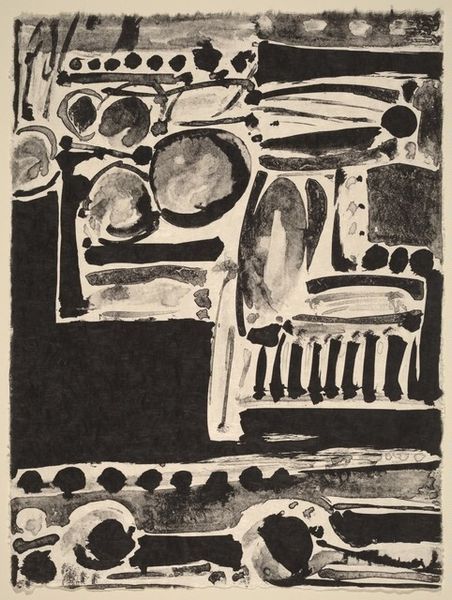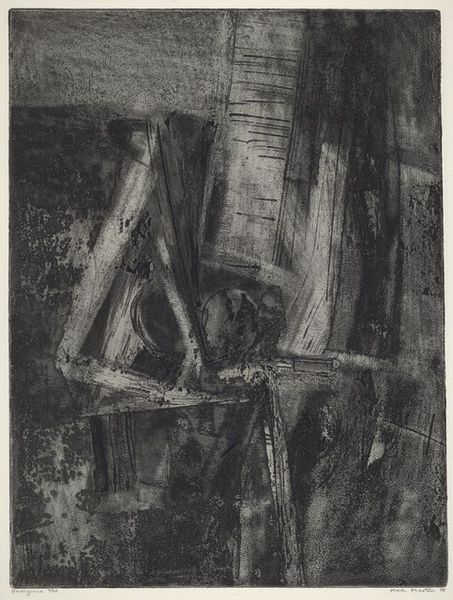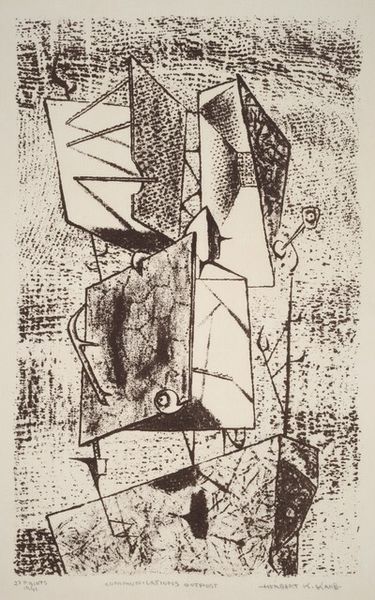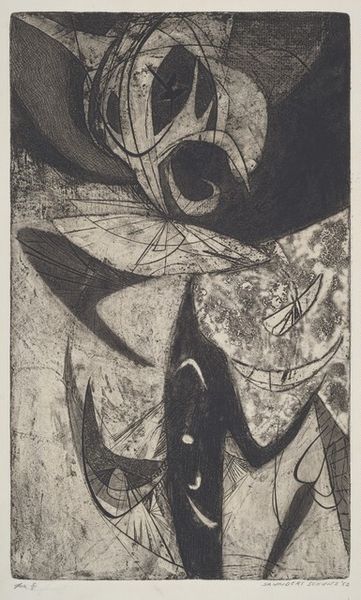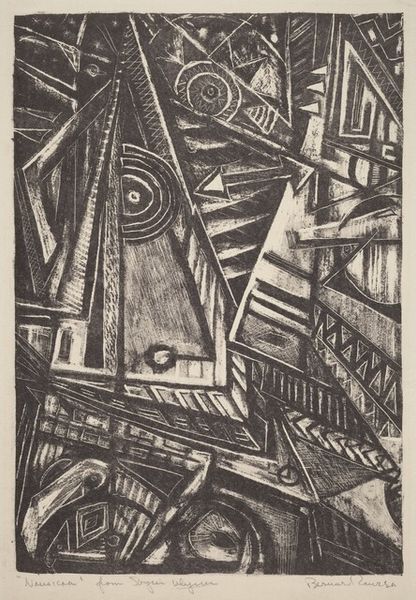
drawing, print, graphite
#
abstract-expressionism
#
drawing
# print
#
pencil drawing
#
geometric
#
abstraction
#
graphite
Dimensions: image: 452 x 299 mm paper: 498 x 345 mm
Copyright: National Gallery of Art: CC0 1.0
Curator: This print immediately gives me the feeling of ancient pictographs emerging from a cave wall, flickering in the firelight. Editor: I see what you mean about that primeval feel. We're looking at "Night Pattern" by Mary A. Chenoweth, created sometime in the 1950s. It's a compelling example of abstract expressionism rendered in graphite, showcasing the artist's adeptness with drawing and printmaking. Curator: The geometric forms against the dark background seem almost totemic, hinting at a ritualistic purpose. The symbols themselves… they’re almost recognizable, yet remain just beyond our grasp. Do you think it speaks to a collective unconscious, this echo of primal forms? Editor: I think the appeal of abstraction lies in its ambiguity, in the possibilities it offers for interpretation. Consider the time period: The 1950s was a time of tremendous anxiety surrounding nuclear proliferation and Cold War paranoia. Chenoweth was likely reacting to the socio-political landscape around her. Perhaps this obscurity is intentional, a reflection of the uncertain times? Curator: Certainly a viable position! But what’s particularly compelling is the dynamic between light and shadow. The contrast here heightens the mystery of these shadowy figures; like forms glimpsed in the twilight, inviting us to construct our own meaning from their enigmatic presence. Editor: That interplay of dark and light also underscores the influence of Surrealism and automatism on American art. Chenoweth isn’t interested in portraying observable reality so much as in making visible subconscious feeling, a perspective that art offered to her viewing public. Curator: True! The piece invites one to lean in and attempt to unravel a hidden code. Are they dwellings, symbolic figures, or just pure, emotive abstraction? Editor: Ultimately, it becomes a mirror. I think Chenoweth’s "Night Pattern," serves to reflect our own anxieties, projections, and search for meaning in a turbulent world. Its power resides in the void we, the viewers, are invited to fill. Curator: Well, in that case, I see stars. The artwork's appeal to the subconscious, mixed with cultural memory, provides an avenue to explore those feelings through symbols. Thank you for the context! Editor: And I think the piece pushes the viewer toward abstraction’s larger role. How does art respond to social disquietude, what forms does that reflection take? Hopefully the dialogue has furthered listeners' experience today!
Comments
No comments
Be the first to comment and join the conversation on the ultimate creative platform.
